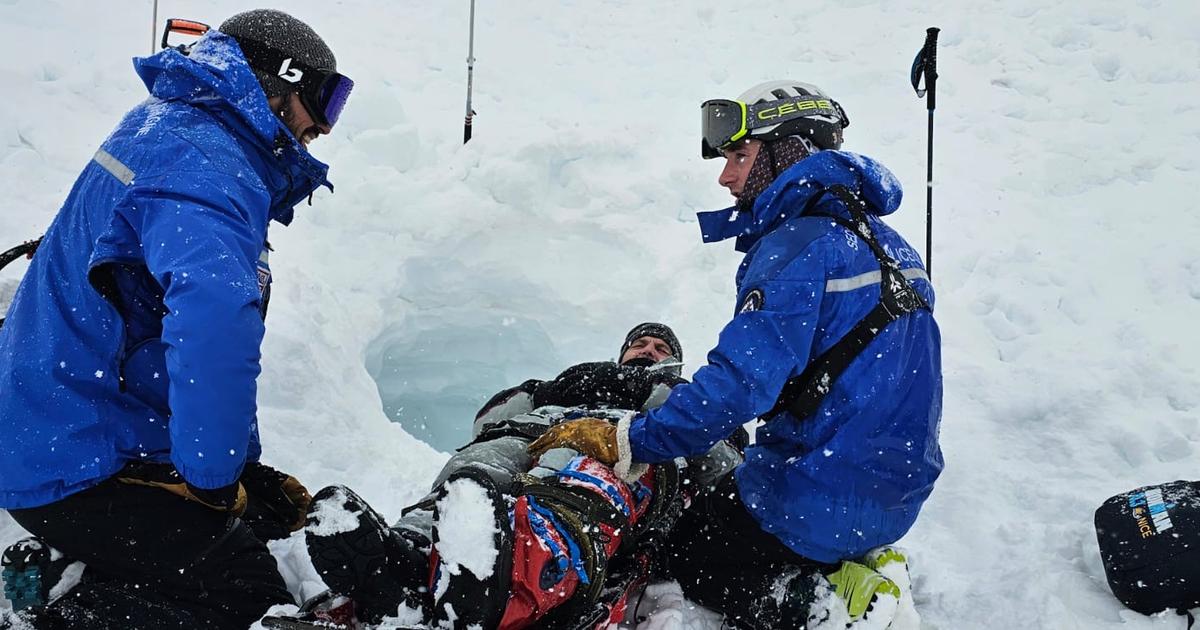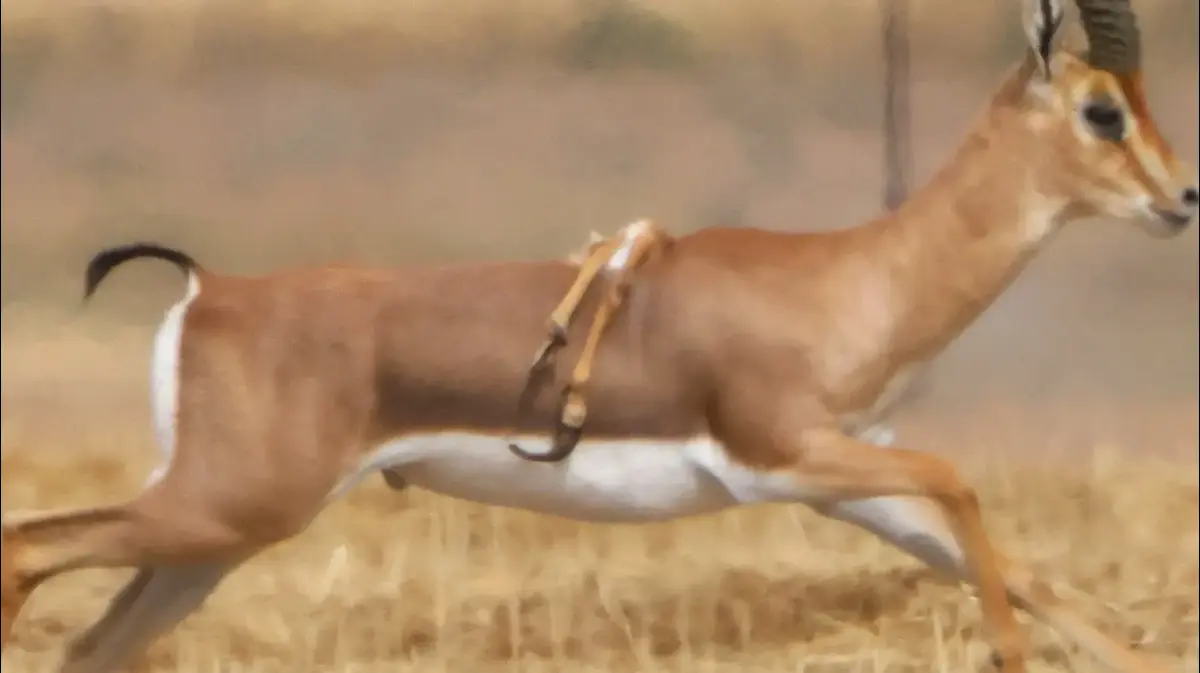"It's a matter of life and death": the association saves fawns from a mowing machine - even with a drone
Created: 05/22/2022, 22:10
By: Andrea Graepel
If possible, the fawns are placed in the crate in such a way that they do not take on any foreign odours.
© Kitzrettung Andechs
It's set time.
But it's also mowing time.
The Kitzrettung association is therefore working flat out to save all fawns from the mowing machine - on foot or with a drone.
Andechs
- "If I were Kitz, I would want to be here," says Jana Schmaderer.
It stands in the middle of meter-high grass very close to the Mesnerbichl nature reserve in Erling.
She looks down attentively, because it is not unlikely that a fawn is suddenly lying in front of her feet.
Mowing time is setting time: It's high season for the fawn rescuers from Andechs
The club Kitzrettung Andechs therefore has high season.
In close consultation with hunters and farmers, she and a handful of volunteers are out in the early hours of the morning to rescue fawns from the mower.
"A good thing," says hunter Christian Völk.
Many Erlingen farmers also welcome the use.
The Kitzrettung Andechs association has existed since last year.
The aim is to search meadows for kids before mowing in close consultation with farmers and hunters - with a drone or on foot.
The Andechs club has purchased its own aircraft for this purpose.
It is equipped with a sensitive thermal imaging camera and cost 6500 euros.
In addition, there are a number of batteries for 180 euros each, a screen and walkie-talkies, as well as liability and comprehensive insurance for the drone and the club.
Jana Schmaderer and her husband Peter have been keeping a close eye on the agricultural weather for days.
Because the grass is high and the first mowing is due - the silage.
Organic goat farmer Georg Scheitz calls it "canned sauerkraut" - the best, protein-rich animal feed for the winter, which is stupidly brought in at the same time as the planting season.
Around May 20th most fawns are born.
Kitzrettung Andechs is a welcome help for everyone
The second mowing follows after the next period of fine weather in 14 to 21 days after four consecutive dry days.
Then there is hay.
If you are lucky, most fawns will be able to walk by then.
Deer lay their young from April to June.
This happens in the forest, but also on the green meadow.
There is a lot of grassland in Andechs, around 80 percent of the municipal area.
Christian Völk knows that about 60 percent of these are cultivated.
He has been a hunter in the Erling-Süd hunting area for 26 years.
The kitz rescuers are also on the move there.
During her first assignment a week ago, Völk brought a large bag of fresh pretzels as a reward for everyone.
Naturally, the hunter also cares about the game.
And Völk also does his part to ensure that the animals have an undisturbed retreat.
Fallow land, for example, which is only mowed once a year in autumn, would not be hunted "so that the goats can lay their eggs in peace".
And it used to be he who walked the meadows with the farmers before mowing.
The Andechs fawn rescue team is therefore a welcome help for everyone.
The reason why is also made clear by the size of the area that the Kitz rescuers scout out on the Erlinger Flur first thing in the morning.
Fields are searched for fawns early in the morning with drones and thermal imaging cameras © Kitzrettung Andechs
also read
Young people crash into a tree with a car: 18-year-old is in mortal danger
Blue light ticker for the Starnberg region: pensioners cheated out of cash and gold worth 30,000 euros
Early deployment with drone pilots: the higher the sun, the more difficult the search
In weeks of work, Peter Schmaderer compiled all the coordinates of the fields well into the night before the operation.
25 fields from three farmers are reported for this operation, a total area of 110 hectares or 1.1 million square meters.
Two friendly drone pilots have volunteered to help with the early deployment.
The meeting point is at 5.30 a.m., because the clear temperature difference is crucial for the thermal imaging camera to find the fawns.
This is only possible in the morning when the ground is cold – around six degrees at the beginning of the week.
A fawn has a body temperature of around 28 degrees.
The higher the sun is and the warmer the ground, the more difficult the search becomes.
Quite a few volunteers are there for the first time.
And when Jana Schmaderer explains to them how careful they have to be when they find a fawn, their pulse rises just by listening.
The rescue may only be carried out with gloves.
Any human smell can be lethal to a fawn.
"Then they're lost," says Jana Schmaderer.
The goats don't take them anymore.
If walkers and joggers see a fawn and stroke it in delight, that would be its death sentence.
The voluntary kitz rescuers know about the danger and are careful.
And they also know: once the fawn is found, it can stay in the yellow safety box for a maximum of four hours, because the goat comes every four hours to suckle.
Within these four hours, the meadow must be mowed and the fawn brought back to a safe place near where it was found.
The mother picks it up there because she hears the squeaking sound with which the young calls for her.
(Our Starnberg newsletter keeps you regularly informed about all the important stories from your region. Register here.)
"Most goats lay their kids in the same place every year"
Christian Völk knows from his many years of experience where the probability of a fawn lying in the meadow is high.
"Most goats deposit their kids in the same place every year," he says.
"Of course, no one knows for sure, but it's true for the most part." So far, there hasn't been a major problem in Erling.
This is also due to the fact that the farmers carefully walked the meadows with him.
He personally prefers the complex inspection to any deterrence with high-frequency sounds.
Organic farmer Scheitz, on the other hand, prefers modern technology to a fawn getting caught in the mower.
For Völk, on the other hand, the high-frequency sound is first and foremost another sensitive disturbance that drives the animals away.
Quiet is important for the game, especially after the leisure pressure of the past few years.
Jana Schmaderer divides the eleven volunteers into three teams, each centered around the drone pilot.
Each team is equipped with two rescue boxes and gloves.
Peter Schmaderer instructs his fellow pilots with the coordinates of the reported meadows.
These are entered into the expensive aircraft, which then later search the areas in autopilot mode, whirring softly, almost silently, while another helper follows the search on a screen at the starting point in parallel with the pilot and communicates with the helpers in the airfield via walkie-talkie meadow holds.
The fawn rescuers are getting ready.
© Andrea Gräpel
Florian Hammers is an experienced animal rescuer and drone pilot.
He comes from Gilching.
He immediately recognizes what a dung heap is or what a deer could be.
However, as the day temperature increases, it becomes difficult for him too.
After three hours, individual warm orange dots on a purple (cold) background become a large, almost uniformly orange area.
"We want to do a good job, after all it's a matter of life and death"
It's already 7 a.m. when the team and Hammers search the large area near Mesnerbichl.
The animal rights activist is pretty sure that fawns have to lie in the grass.
"You can put on your nimble shoes," he says.
"If there aren't any fawns in there, I don't know either." Jana Schmaderer therefore marches off expectantly with Eva Schmitt.
Via walkie-talkie, Dr.
Walter Kellner received instructions from the screen in which direction they had to go.
But it's too late.
What looked like a fawn ended up being a small, warmed up, bare patch of earth in the middle of the meadow.
On this day none of the three teams finds a fawn.
"Fortunately, actually," says Jana Schmaderer.
Only three teams can fly half of the 110 hectare area that day.
"We want to do a good job, after all it's a matter of life and death," says Jana Schmaderer.
At the same time, she knows that there is no guarantee that a fawn will not be overlooked.
In dense clover grass meadows, for example, where the grass covers the young like a roof, or in certain terrain formations, such as are common in the Andechs protected areas.
Human and technical errors cannot be ruled out either.
But the association is working on this, “if possible together with farmers and hunters”.
"In the end, it's the sum of the measures that makes the difference."
"Our service can only be an auxiliary service," says Jana Schmaderer.
For that she is very valuable.
Because in the four missions so far, six fawns have been saved by the drone search.
“We still have a large group of helpers who would walk the meadows during the day.
Unfortunately, she has not yet been asked," says the association's chairman.
"In the end, it's the sum of the measures that makes the difference."
Many fawns have been set during the full moon phase over the past few days.
The kitz rescuers from Polling in the neighboring district of Weilheim-Schongau, which have been well established for years and are much larger, have already been able to save a double-digit number of kittens.
Jana Schmaderer is also hoping for more rescues and inquiries.
After all, the first mowing is followed by the second.
"If we have free capacity, we are also happy to help out in other communities." Whether early in the morning or later in the day - the valuable nature, especially around Andechs, where apart from the birdsong during early operations, only the quiet whirring of the drone can be heard, is compensation enough.
If then fawns are saved, so much the better.
Further information
Information, including donation options, is available at kitzrettung-andechs.de.
You can find more current news from the district of Starnberg at Merkur.de/Starnberg.













